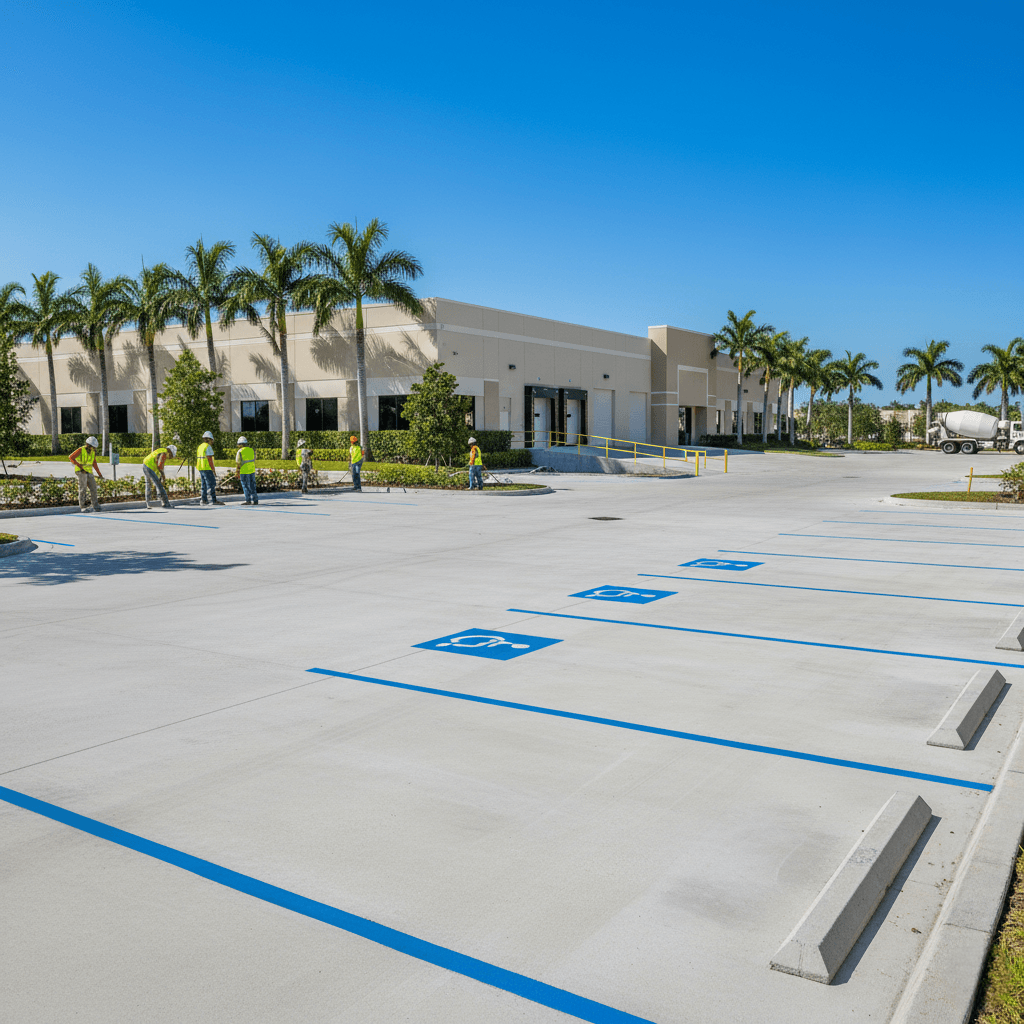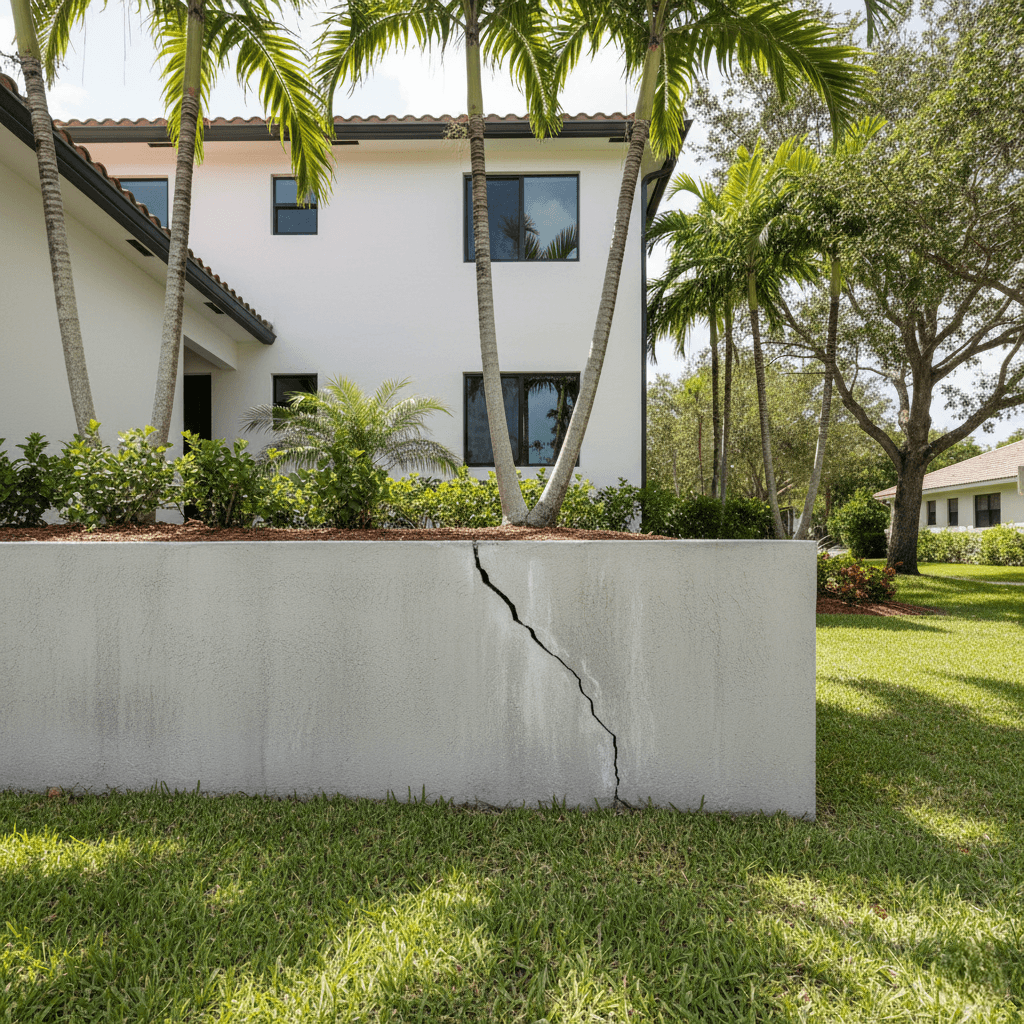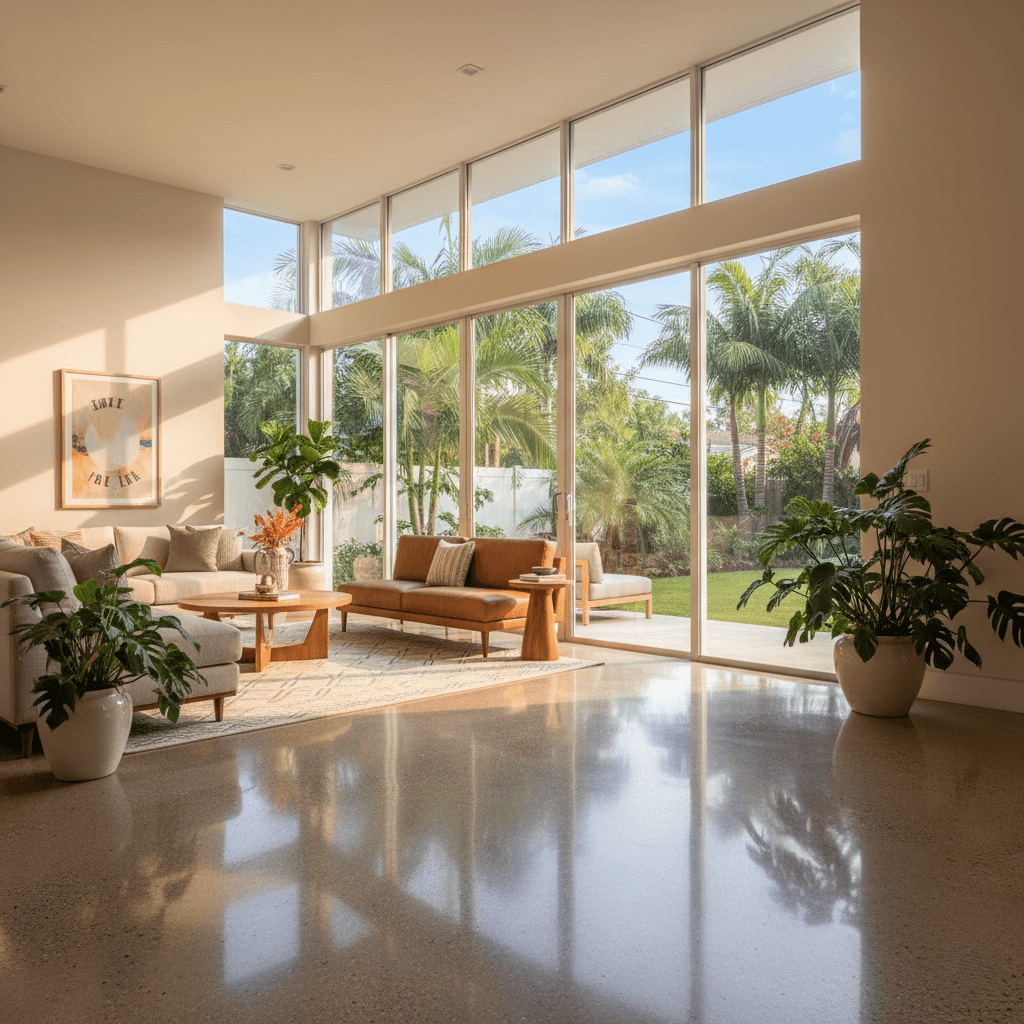
Miami Gardens: Signs You Need Concrete Foundation Repair
Concrete Foundation Repair Miami Gardens
Your home’s foundation provides essential structural support that keeps walls vertical, floors level, and doors operating properly. When problems develop, they rarely improve on their own and typically worsen over time, potentially causing extensive damage and compromising safety. Recognizing warning signs early allows homeowners to address issues promptly before minor problems escalate into costly major repairs. Miami Gardens properties face specific challenges, including sandy soils, high water tables, heavy seasonal rainfall, and occasional severe weather that can stress foundations and create conditions requiring professional concrete foundation repair. Understanding what indicators demand immediate evaluation protects your investment and prevents situations that threaten structural integrity.

Wall Cracks and Structural Separations
Interior and exterior wall cracks represent among the most visible foundation distress indicators. Not all cracks signal serious problems, as minor hairline cracks often result from normal settling or minor shrinkage during curing. However, certain crack patterns demand immediate professional evaluation. Horizontal cracks running parallel to the floors suggest significant pressure against foundation walls. Diagonal cracks extending from the corners of doors or windows indicate differential settlement where portions of the foundation move independently.
Stair-step cracks in brick or block walls follow mortar joints in distinctive patterns clearly visible from outside. These cracks typically widen progressively, becoming more pronounced as foundation movement continues. Properties throughout the Norland neighborhood or near Lake Lucerne should monitor exterior walls regularly for developing crack patterns. Cracks exceeding one-eighth inch in width or those displaying visible separation require professional inspection regardless of location or orientation.
Interior Drywall and Ceiling Indicators
Inside homes, foundation problems manifest through various drywall symptoms. Vertical cracks appearing at corners where walls meet ceilings often indicate settling. Cracks running horizontally along wall-ceiling junctions suggest more serious structural movement. Gaps opening between walls and ceilings create visible separations, exposing framing or insulation. Nail pops occurring repeatedly in the same areas indicate ongoing movement stressing wall surfaces. These interior signs warrant immediate attention, particularly when multiple symptoms appear simultaneously or progress noticeably over short periods.
Door and Window Operation Problems
Doors and windows provide excellent early warning systems for foundation issues because their frames must remain square to operate properly. Single doors sticking occasionally might result from humidity affecting wood or loose hinges requiring adjustment. However, multiple doors throughout the home exhibiting similar problems simultaneously suggest foundation movement altering frame geometry. Doors refusing to latch, requiring forceful closing, or swinging open independently indicate frames pulled out of square.
Windows displaying similar symptoms provide additional confirmation. Glass panes cracking without obvious impact damage suggest extreme frame distortion. Gaps appearing around window perimeters allow air and moisture infiltration while indicating separation from surrounding structures. Properties near Hard Rock Stadium or throughout the Carol City community should evaluate door and window performance regularly, noting any changes in operation smoothness or alignment. Document problems carefully, as progression patterns help professionals diagnose underlying causes accurately.
Uneven and Sloping Floors
Level floors throughout homes represent fundamental expectations homeowners rightfully maintain. Detecting floor problems sometimes requires simple tools, including spirit levels or smartphone applications providing accurate measurements. Walk through rooms, noting whether floors feel noticeably uneven underfoot. Marbles or balls placed on floors and rolling independently indicate significant slopes warranting investigation.
Certain floor irregularities prove particularly concerning. Sudden elevation changes creating visible ridges suggest foundation sections moving vertically relative to adjacent areas. Floors sloping consistently toward exterior walls may indicate perimeter settling. Bouncy or springy floors in homes with crawl spaces might result from failing support posts rather than foundation issues, though both situations require professional evaluation. Areas throughout Bunche Park or near the Palmetto Expressway built on variable soil conditions may experience differential settlement, producing noticeable floor level changes.
Tile and Flooring Damage
Hard flooring materials, including ceramic tile, natural stone, and rigid vinyl, respond dramatically to foundation movement. Tile cracks radiating from corners or forming patterns across floors indicate substrate movement beneath. Grout lines cracking extensively throughout rooms suggest continuous shifting, stressing brittle materials. Tiles becoming loose or hollow-sounding when tapped demonstrate separation from substrates caused by movement. These flooring symptoms often appear before other visible foundation indicators become obvious, making them valuable early warning signs demanding investigation.
Exterior Foundation Observations
Regular exterior foundation inspections identify developing problems before they cause extensive interior damage. Walk around your home’s perimeter examining visible foundation surfaces for cracks, displacement, or deterioration. Vertical cracks running straight up foundation walls typically cause less concern than horizontal or diagonal patterns. Foundation sections visibly separating from structures, leaning outward, or displaying bulging require immediate professional evaluation.
Check expansion joints between the foundation and attached structures, including porches, patios, or garage slabs. These joints accommodate independent movement, but excessive separation suggests problems. Inspect foundation surfaces for spalling, where concrete surfaces flake or deteriorate, exposing aggregates. This condition often results from moisture infiltration, freeze-thaw cycles, or chemical exposure common in coastal environments. Properties throughout Scott Lake or near Rolling Oaks benefit from systematic quarterly inspections documenting any changes in foundation appearance or condition.
Moisture and Water Intrusion Issues
Water represents one of the most damaging forces affecting foundations. Chronic moisture problems indicate either foundation defects allowing water entry or drainage issues creating hydrostatic pressure. Basements or crawl spaces displaying persistent dampness, standing water, or musty odors require immediate attention. Water staining on foundation walls shows historical moisture exposure even after the surfaces dry.
Efflorescence, white crystalline deposits forming on foundation surfaces, results from water carrying dissolved salts to surfaces where they crystallize as moisture evaporates. This indicates active water movement through concrete, suggesting compromised waterproofing or drainage problems. Mold or mildew growth in basements, crawl spaces, or along foundation perimeters signals excessive moisture, creating health hazards and potential structural problems. Miami Gardens’ high humidity and frequent rainfall make moisture management particularly critical for foundation health and longevity.
Drainage and Grading Problems
Proper site drainage prevents water from accumulating against foundations, where it creates pressure and infiltrates through cracks or porous concrete. Standing water pooling near foundations after rainfall indicates inadequate grading. Soil slopes should direct water away from structures at minimum grades, ensuring positive drainage. Gutters and downspouts must function properly, directing roof runoff away from foundations rather than depositing it immediately adjacent to walls. Properties throughout Vista Verde or near the Andover area require particular attention to drainage during South Florida’s rainy season, when inadequate systems become apparent.
Gaps and Separations Throughout Structures
Foundation movement creates visible gaps as different building components separate. Cabinets pulling away from walls leave noticeable spaces, indicating wall movement. Countertops separating from walls suggest similar problems. Crown molding developing gaps at the ceiling junctions shows either ceiling settlement or wall displacement. Baseboards separating from walls indicate floor or wall movement relative to each other.
Exterior gaps prove equally significant. Chimneys leaning or separating from main structures demonstrate independent settling of chimney foundations versus house foundations. Porches pulling away from houses indicate differential movement between these separately supported structures. Garage attachments displaying separation from the main houses suggest similar problems. These visible gaps typically widen progressively, making periodic documentation valuable for tracking problem progression and planning appropriate interventions.
Plumbing and Utility Complications
Foundation movement stresses rigid plumbing systems, often causing leaks or drainage problems. Drains operating slowly throughout houses might result from sewer line damage caused by settling. Water pressure fluctuations or persistent low pressure can indicate supply line damage from foundation shifts. Visible water staining around plumbing penetrations suggests active leaks, potentially both causing and resulting from foundation problems.
Sewer gas odors appearing periodically indicate vent system damage or trap seal failures from drainage system misalignment. These problems require immediate attention for both health and structural reasons. Foundation movement also affects gas lines, electrical conduits, and other utilities penetrating foundations, potentially creating dangerous situations demanding prompt professional evaluation and repair.
Secondary Structural Indicators
Beyond primary foundation symptoms, various secondary indicators suggest underlying problems. Roof lines appearing uneven or sagging indicate structural distortions potentially originating from foundation issues. Walls appearing bowed or leaning suggest pressure from foundation problems transmitting through the framing. Ceilings developing noticeable sags away from normal flat planes demonstrate structural distress warranting investigation.
Interior trim and finish carpentry displaying gaps, misalignments, or fastener failures throughout homes indicates widespread movement affecting multiple building systems simultaneously. These comprehensive symptoms typically develop gradually but accelerate once foundation problems reach critical stages. Recognizing these patterns early provides opportunities for intervention before damage becomes extensive or irreparable.
When to Seek Professional Evaluation
Understanding which symptoms demand immediate professional assessment versus those that allow monitoring helps homeowners make appropriate decisions. Single minor cracks appearing stable over months typically pose minimal concern. Multiple symptoms appearing simultaneously or any indicators progressing noticeably over weeks or months require professional evaluation. Horizontal foundation cracks, significant structural separations, doors failing to close properly, or visible foundation displacement all warrant immediate inspection regardless of other symptoms.
Professional foundation inspections provide comprehensive evaluations identifying problems, determining causes, and recommending appropriate solutions. Qualified inspectors measure foundation levels, assess crack patterns, evaluate drainage adequacy, and examine structural components for distress indicators. These thorough assessments establish problem severity and guide repair planning. Waiting to address obvious foundation problems invariably increases repair costs while risking additional damage to structures, utilities, and finishes throughout homes.
The Importance of Timely Intervention
Foundation problems rarely stabilize independently and typically worsen progressively. Minor cracks widen, small settlements increase, and isolated problems spread, affecting larger portions of structures. Early intervention when problems remain manageable costs significantly less than repairs delayed until extensive damage occurs. Additionally, some foundation problems create safety hazards, including structural instability, moisture promoting mold growth, or utility system damage, which can create fire or health risks.
Property values suffer when foundation problems exist or appear in inspection reports. Addressing issues promptly maintains home values and marketability. Disclosure requirements mandate revealing known foundation problems to potential buyers, making professional repairs essential for future transactions. Timely repairs demonstrate responsible homeownership while protecting investments and ensuring occupant safety. Miami Gardens Concrete Pros provides comprehensive foundation evaluations and professional concrete foundation repair services addressing the full spectrum of issues affecting local homes, from minor crack repairs through complex structural stabilization projects requiring specialized techniques and equipment suited to South Florida’s unique conditions and construction methods.



